- Home
- Elizabeth Gilbert
The Best American Travel Writing 2013
The Best American Travel Writing 2013 Read online
Table of Contents
Title Page
Table of Contents
Copyright
Foreword
Introduction
A Prison, a Paradise
The Bull Passes Through
The Way I’ve Come
Blot Out
The Year I Didn’t
Tea and Kidnapping
The Paid Piper
Dentists Without Borders
Confessions of a Packing Maximalist
Summerland
The Wild Dogs of Istanbul
Bombing Sarajevo
Vietnam’s Bowl of Secrets
Babu on the Bad Road
The Pippiest Place on Earth
Dreaming of El Dorado
Caliph of the Tricksters
A Farewell to Yarns
Pirate City
Contributors’ Notes
Notable Travel Writing of 2012
About the Editor
Footnotes
Copyright © 2013 by Houghton Mifflin Harcourt Publishing Company
Introduction copyright © 2013 by Elizabeth Gilbert
ALL RIGHTS RESERVED
The Best American Series® is a registered trademark of Houghton Mifflin Harcourt Publishing Company. The Best American Travel Writing™ is a trademark of Houghton Mifflin Harcourt Publishing Company.
No part of this work may be reproduced or transmitted in any form or by any means, electronic or mechanical, including photocopying and recording, or by any information storage or retrieval system without the proper written permission of the copyright owner unless such copying is expressly permitted by federal copyright law. With the exception of nonprofit transcription in Braille, Houghton Mifflin Harcourt is not authorized to grant permission for further uses of copyrighted selections reprinted in this book without the permission of their owners. Permission must be obtained from the individual copyright owners as identified herein. Address requests for permission to make copies of Houghton Mifflin Harcourt material to Permissions, Houghton Mifflin Harcourt Publishing Company, 215 Park Avenue South, New York, New York 10003.
www.hmhbooks.com
Library of Congress Cataloging-in-Publication data is available.
ISSN 1530-1516
ISBN 978-0-547-80898-7
eISBN 978-0-547-81009-6
v1.1013
“The Pippiest Place on Earth” by Sam Anderson. First published in the New York Times Magazine, February 12, 2012. Copyright © 2012 by Sam Anderson. Reprinted by permission of Sam Anderson.
“Dreaming of El Dorado” by Marie Arana. First published in Virginia Quarterly Review, Fall 2012. Copyright © 2012 by Marie Arana. Reprinted by permission of Marie Arana.
“The Wild Dogs of Istanbul” by Bernd Brunner. First published in The Smart Set, February 29, 2012. Copyright © 2012 by the Smart Set. Reprinted by permission of the Smart Set.
“The Bull Passes Through” by Kevin Chroust. First published in the Morning News, July 13, 2012. Copyright © 2012 by the Morning News LLC. Reprinted by permission of Kevin Chroust.
“Pirate City” by Rich Cohen. First published in the Paris Review, Summer 2012. Copyright © 2012 by Rich Cohen. Reprinted by permission of the author.
“The Way I’ve Come” by Judy Copeland. Published in Legal Studies Forum, Volume 36, No. 1. First published in the Florida Review, Volume 28, No. 2, under the title “The Art of Bushwhacking.” Copyright © 2012 by Judy Copeland. Reprinted by permission of the author.
“Caliph of the Tricksters” by Christopher de Bellaigue. First published in Harper’s Magazine, December 2012. Copyright © 2012 by Christopher de Bellaigue. Reprinted by permission of Christopher de Bellaigue.
“Babu on the Bad Road” by Jesse Dukes. First published in Virginia Quarterly Review, Winter 2012. Copyright © 2012 by Jesse Dukes. Reprinted by permission of Jesse Dukes.
“Vietnam’s Bowl of Secrets” by David Farley. First published in Afar, May/June 2012. Copyright © 2012 by David Farley. Reprinted by permission of David Farley.
“A Farewell to Yarns” by Ian Frazier. First published in Outside, November 2012. Copyright © 2012 by Ian Frazier. Reprinted by permission of the Wylie Agency, LLC.
“Bombing Sarajevo” by Dimiter Kenarov. First published in Outside, January 2012. Copyright © 2012 by Dimiter Kenarov. Reprinted by permission of Dimiter Kenarov.
“Blot Out” by Colleen Kinder. First published in Creative Nonfiction, Spring 2012. Copyright © 2012 by Colleen Kinder. Reprinted by permission of Creative Nonfiction and the author.
“Summerland” by Peter Jon Lindberg. First published in Travel+Leisure, August 2012. Copyright © 2012 by Peter Jon Lindberg. Reprinted by permission of the author.
“Dentists Without Borders” by David Sedaris. First published in The New Yorker, April 2, 2012. Copyright © 2012 by David Sedaris. Reprinted by permission of the author.
“The Paid Piper” by Grant Stoddard. First published in T Magazine, November 12, 2012. Copyright © 2012 by the New York Times. All rights reserved. Used by permission and protected by the copyright laws of the United States. The printing, copying, redistribution, or retransmission of this content without express written permission is prohibited.
“A Prison, a Paradise” by John Jeremiah Sullivan. First published in the New York Times Magazine, September 23, 2012. Copyright © 2012 by the New York Times. All rights reserved. Used by permission and protected by the copyright laws of the United States. The printing, copying, redistribution, or retransmission of this content without express written permission is prohibited.
“Tea and Kidnapping” by Sarah A. Topol. First published in The Atlantic, October 2012. Copyright © 2012 by Sarah A. Topol. Reprinted by permission of Sarah A. Topol.
“The Year I Didn’t” by Daniel Tyx. First published in Gulf Coast, Volume 25, No. 1. Copyright © 2012 by Daniel Tyx. Reprinted by permission of Daniel Tyx.
“Confessions of a Packing Maximalist” by Lynn Yaeger. First published in Travel+Leisure, September 2012. Copyright © 2012 by Lynn Yaeger. Reprinted by permission of Lynn Yaeger.
Foreword
WHEN I THINK about travel writing, I often think about photographer Henri Cartier-Bresson. A few years ago, I tried to write a critical essay about the Museum of Modern Art’s huge retrospective on Cartier-Bresson. But over and over again, I failed.
At first, I thought I’d been swayed by a number of esteemed art critics, most of whom seemed disappointed by the exhibition. The show was deemed “almost unenduringly majestic” by The New Yorker’s Peter Schjeldahl, who gave this stern assessment of what he called Cartier-Bresson’s “platitudinous” work: “richly satisfies the eye and the mind, while numbing the heart.” This was seconded by the New York Times’ Holland Cotter, who claimed that Cartier-Bresson’s “ideas and emotions are diffuse” and that “surprisingly little tension builds” in the exhibition. Both critics also trotted out tired old comparisons to the work of Robert Frank, a detractor of Cartier-Bresson’s who once unjustly said of the older photographer, “He traveled all over the world, and you never felt he was moved by something that was happening other than the beauty of it, or just the composition.”
Soon enough, I started to feel angry about the general critical appraisal of the show, especially a certain loaded, snobbish question I’d seen raised numerous times: should we consider Cartier-Bresson’s photography “art,” or is it just (and here I imagine a critic crinkling his nose as if holding a dirty diaper) “journalism”? This stuffy and frankly out-of-touch notion was most clearly expressed by Cotter: “Are we talking about an impassable line that separates photojournalism (Cartier-Bresson) from art (Frank)?” (To Cott
er’s credit, he answered no.)
But I was still confused, still unable to write about Cartier-Bresson, still unable to articulate why I was so frustrated by this supposed “impassable line” between journalism and art. I returned to MoMA for a second viewing, and then it hit me: I was taking everything about Cartier-Bresson—the articles, even the exhibition itself—way too personally.
It hit me as I approached the mural-sized world maps that greet museum-goers at the show’s entrance, with dotted lines tracing Cartier-Bresson’s famous journeys over several decades. Ringing in my ears was Schjeldahl’s snarky take: “This suggests a novel measurement of artistic worth: mileage. It seems relevant only to the glamour quotient—a cult, practically—of Cartier-Bresson’s persona, pointing up what seems to me most resistible in his work.”
Ouch, I thought. But mainly because I was flashing on my own career as a travel writer, one that began almost two decades ago when I gave up on writing a novel. I’ve always harbored deep fears that I passed, miles ago, over that “impassable” line from art to journalism, never to return.
But that, of course, is about me. And compared to Cartier-Bresson, I am a very tiny talent—a hack really, just like all the critics who write about him, as well as most artists who try to emulate him. Cartier-Bresson was a giant. And clearly he never worried at all about whether he was making art, photojournalism, or something else entirely. And this is why I love him.
I can’t remember a time when Cartier-Bresson’s images did not exist in my mind, suggesting an older, more authentic, more beautiful world. I knew those fishermen mending nets in Nazaré, Portugal, before I’d ever seen them myself (and snapped my own inferior version of the same photo). I’d met those old men picnicking in Sardinia before I ever traveled to Sardinia myself and tried in vain to similarly capture them in words. The French boar hunters I followed into the forest had already somehow existed, in my imagination, because of Cartier-Bresson. When I was a teenager growing up in an average American suburb, Cartier-Bresson’s photo provided a particular vision of Old Europe that is permanently etched in my mind, even if it doesn’t exist in the world anymore.
Yes, I know it seems almost quaint these days. “Many of Cartier-Bresson’s pictures could have been made centuries ago, if he and photography had existed then,” reads the MoMA gallery text. The curators, seeming to anticipate the critical response, note that “his keen attention to particulars redeems the strain of romantic nostalgia in his work.”
Pico Iyer, in a 2010 essay titled “The Photographer and the Philosopher,” aptly described the travel writer like this: “A travel writer is, to some degree, Cartier-Bresson roaming around the global or local neighborhood with a book of theology in his hand.” When I was young and beginning my own wanderings, that book of theology was, for me, written by lyrical correspondents like Iyer himself. In Iyer’s classic essay “Why We Travel” (collected in the very first edition of The Best American Travel Writing), he lays out a sort of traveler’s catechism: he travels in search of “subtler beauties”; he seeks “an innocent eye that can return me to a more innocent self”; he calls all the great travel books “love stories” and says “all good trips are, like love, about being carried out of yourself and deposited in the midst of terror and wonder.” When Iyer writes, “Travel is the best way we have of rescuing the humanity of places, and saving them from abstraction and ideology,” he may as well be describing the work of Cartier-Bresson.
With his tendency toward lyricism, Iyer has faced critical complaints similar to those made against Cartier-Bresson, such as this dismissive judgment from the Times Sunday Book Review about his book Sun After Dark: “Iyer too often relies on overblown figures of speech and pretty pastiches in lieu of solid observation or reporting.”
This is no surprise. As soon as artists (or is it journalists?) start talking about things like “the humanity of places,” critics uncomfortably reach for adjectives such as platitudinous and melodramatic. Likewise, whenever an artist (or is it a journalist?) nakedly sets out to capture beauty in this way, what always comes forth is that nagging question—Frank’s question of Cartier-Bresson—of whether beauty is enough, or whether something other than the beauty of it also needs to be happening.
So I guess this is why I have failed, and will continue to fail, to write in any critical fashion about Cartier-Bresson. The couple on the train in Romania. The young boys gathered in a sunny square in Madrid. The family having a picnic on the riverbank. I can’t imagine my life without images such as these. For me, like so much of the travel writing I love, the beauty simply has to be enough.
The stories included here are, as always, selected from among hundreds of pieces in hundreds of diverse publications—from mainstream and specialty magazines to Sunday newspaper travel sections to literary journals to travel websites. I’ve done my best to be fair and representative, and in my opinion the best travel stories from 2012 were forwarded to guest editor Elizabeth Gilbert, who made our final selections.
I now begin anew by reading the hundreds of stories published in 2013. As I have for 14 years, I am asking editors and writers to submit the best of whatever it is they define as travel writing. These submissions must be nonfiction, published in the United States during the 2013 calendar year. They must not be reprints or excerpts from published books. They must include the author’s name, date of publication, and publication name, and they must be tear sheets, the complete publication, or a clear photocopy of the piece as it originally appeared. I must receive all submissions by January 1, 2014, in order to ensure full consideration for the next collection.
Further, publications that want to make certain their contributions will be considered for the next edition should make sure to include this anthology on their subscription list. Submissions or subscriptions should be sent to Jason Wilson, Drexel University, 3210 Cherry Street, 2nd floor, Philadelphia, PA 19104.
Working with Elizabeth Gilbert has been something I’ve been hoping to do for many, many years. I believe we approached Liz at least five years in a row, but her busy writing and travel schedule never managed to mesh with the anthology’s until now. It was well worth the wait. What makes this collection special is that Liz was committed to reading the slush pile without bylines. The direct result is the inclusion of wonderful pieces from several smaller journals—such as Gulf Coast, Creative Nonfiction, and Legal Studies Forum—that have never before appeared in the anthology, alongside the usual suspects. This year’s is an outstanding collection, and I hope you enjoy it.
Finally, I am grateful to Nicole Angeloro, Timothy Mudie, and Mary Sydnor for their help on this, our 14th edition of The Best American Travel Writing.
JASON WILSON
Introduction
HERE ARE TWO facts I learned long ago about travel writing:
There is no story in the world so marvelous that it cannot be told boringly.
There is no story in the world so boring that it cannot be told marvelously.
To prove the first point, I will provide you with an example from my own personal and painful experience. Long ago, back when Bill Clinton was president and the earth was new, I worked as a writer at GQ magazine. It was a great job. This was still in the days before the Internet undid the magazine business—back when editors of the big glossies could still afford to send writers on long, expensive trips in order to write long, expensive stories about long, expensive subjects. Thus, my editors very expensively sent me a long way off to New Zealand to write about an obsessed scientist who was hunting for the fabled giant squid in the very deepest and most unexplored trenches of the Pacific Ocean. (This was way before there was any video footage of the giant squid to be found on the Internet, such as one can easily find today. Back then, nobody had ever yet seen one of these magnificent creatures alive.)
I was in my 20s and had a tendency toward lazy shortcuts, and probably this is why I decided—in advance of even boarding the plane to New Zealand—that this story was basically going to write
itself. Really, all I had to do was sort of show up, and everything would clearly fall into place, right? Because look at the elements: Mysterious sea creature! Obsessed scientist! Unexplored crevices in the deepest trenches of the ocean! I wouldn’t even have to phone this one in; I could just sort of mumble it in, without even bothering to pick up the phone. So I went to New Zealand, and I had a great time. I drank a lot of beer and hung out with sailors and took a day off to go snorkeling with dolphins just for my own pleasure. Then I came home and wrote the story of the giant squid in about two days—BAM, done. Nailed it! Easy peasy. What’s next? Where’s my next plane ticket?
But my editor (the indomitable Ilena Silverman, who now presides over writers at the New York Times Magazine) didn’t love the story. She found the story to be, as they maddeningly and constantly say in the magazine business, “not yet there.” She gave me some thoughtful and careful advice for how to get the piece there, and I dutifully plugged in her ideas and returned the story to her a few days later. She still didn’t like it. She asked me to rewrite it again. I rewrote it. I took two weeks this time. But she still didn’t like it. She didn’t like my next rewrite either. Nor the next. Nor the next.
Now, Ilena Silverman is not an editor who wastes people’s time, so I knew she wasn’t messing with me on this. She was earnestly searching for ways to help me make this story come alive, but even she seemed uncertain as to precisely what magic was missing from my prose. By now, even I could not deny that my story was leaden, and only getting heavier with each pass. Ilena was confounded by it; I was confounded by it. We trudged ahead, though it felt like we were trudging backward.
I wrote 11 painfully executed drafts of that goddamn giant squid story—which was supposed to be the easiest thing I’d ever written—and I still wasn’t getting any closer to it. Finally, after the 11th draft, my intelligent and gracious editor, who had always delivered her criticisms in the most articulate and gentle manner imaginable, became exasperated. She cracked. I had broken her spirit. She called me up one day and said simply, “Why don’t you try writing this story once more, Liz. Only this time, why don’t you see if you can figure out a way to make it . . . not so boring.”

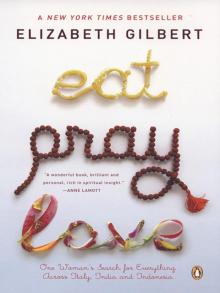 Eat, Pray, Love
Eat, Pray, Love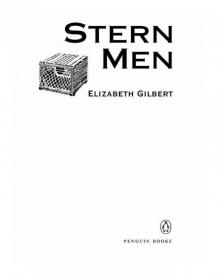 Stern Men
Stern Men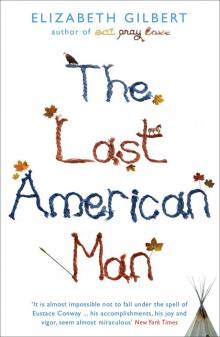 The Last American Man
The Last American Man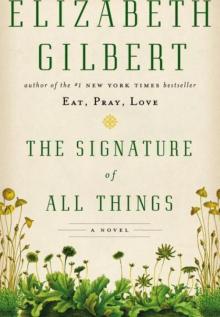 The Signature of All Things
The Signature of All Things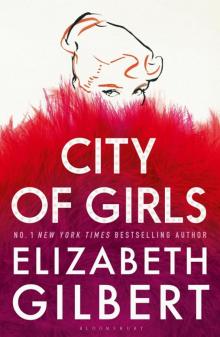 City of Girls
City of Girls Pilgrims
Pilgrims Committed: A Skeptic Makes Peace With Marriage
Committed: A Skeptic Makes Peace With Marriage Big Magic
Big Magic Committed
Committed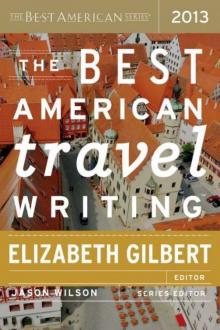 The Best American Travel Writing 2013
The Best American Travel Writing 2013